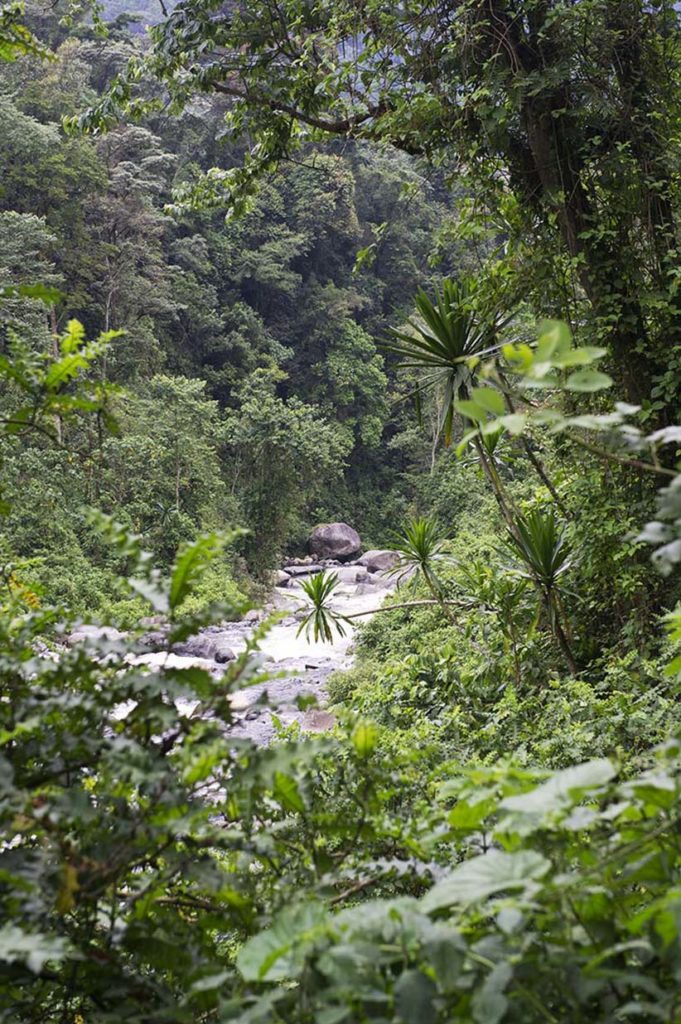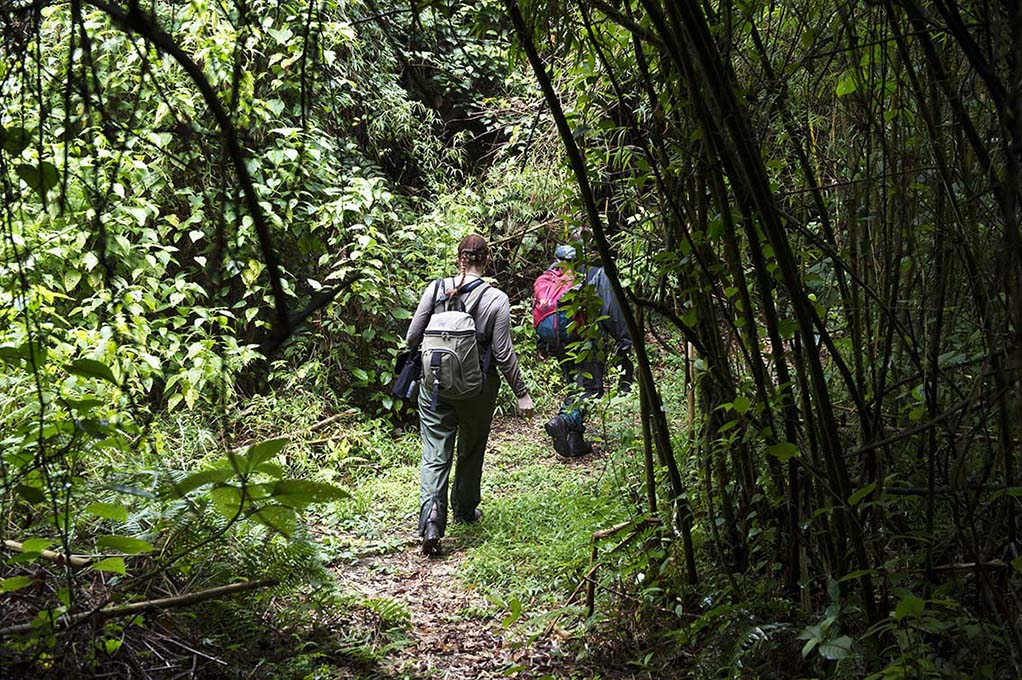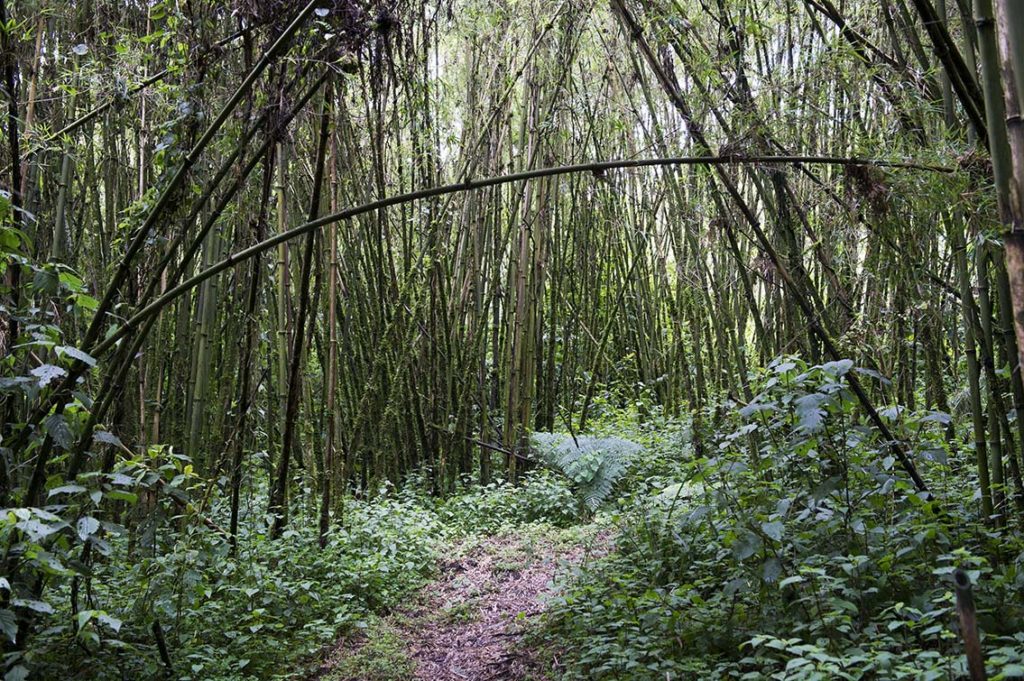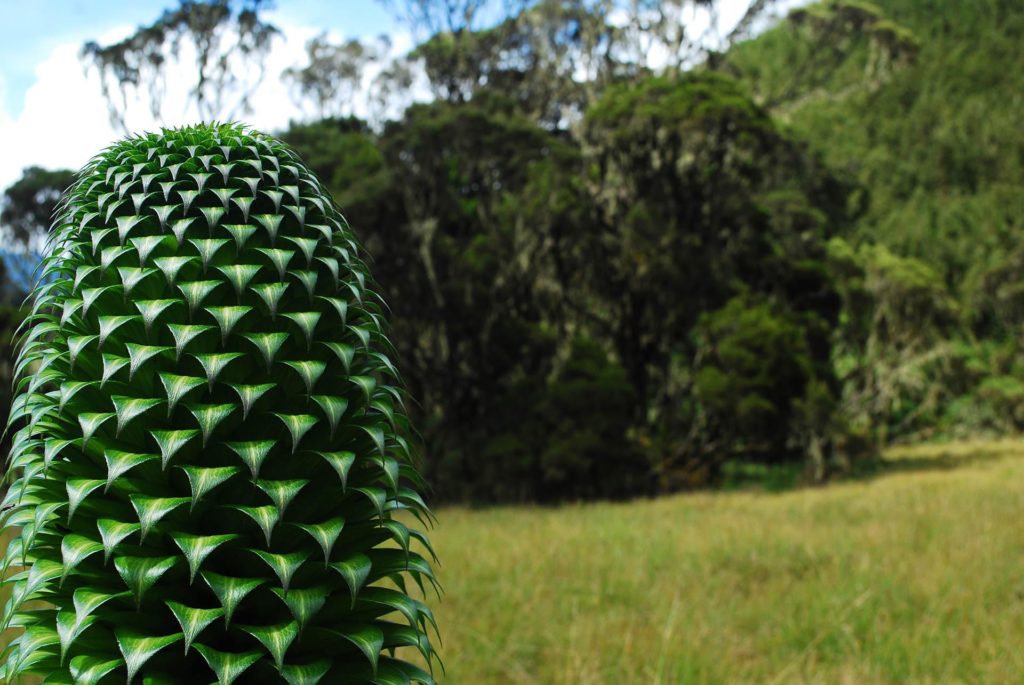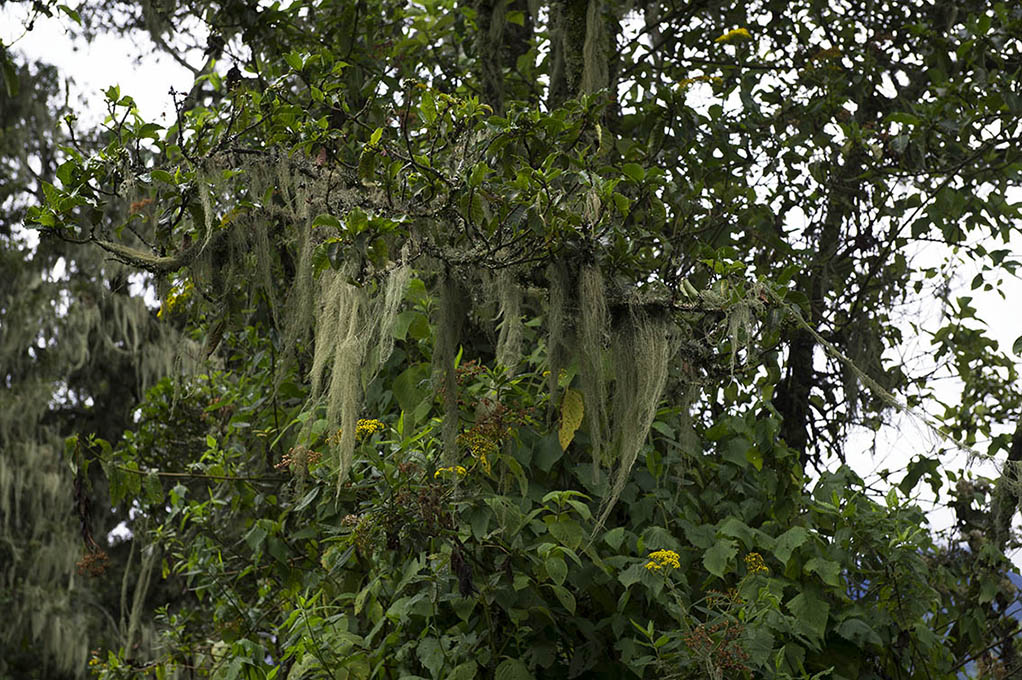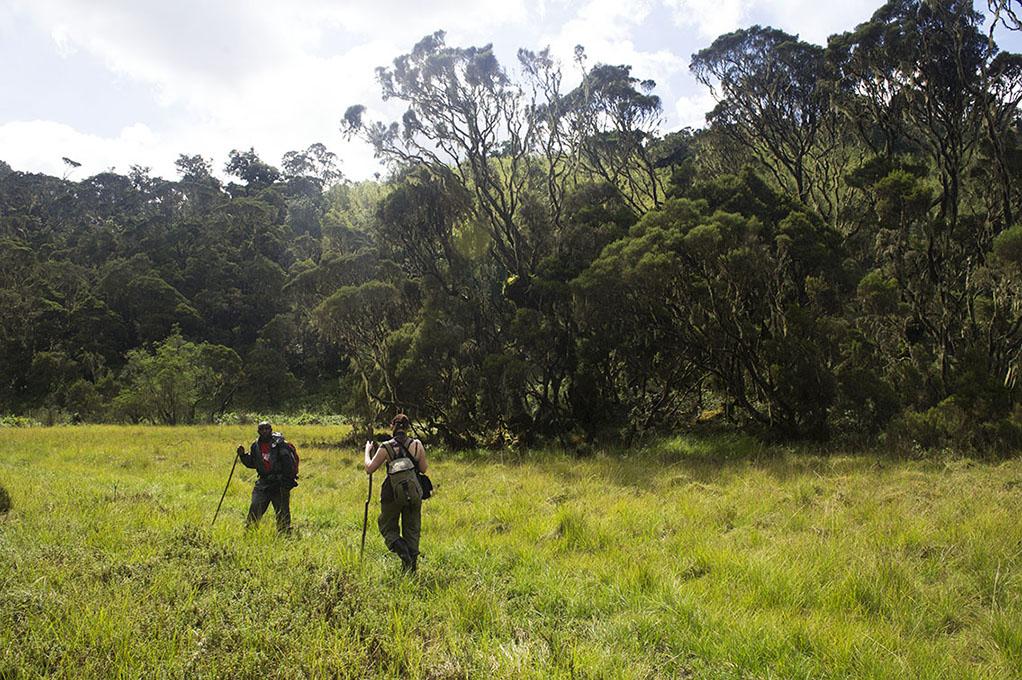The Rwenzori Mountains, located in Uganda, are an unknown gem to the general public. A breathtaking national park full of lush flora and fauna, a true paradise for adventurers and hiking enthusiasts.
Text: Angelique van Os | Photography: Henk Bothof
With its 5109 meters, the Rwenzori Mountains are the third highest and largest mountain range in Africa. The area is better known as the Mountains of the Moon. Nevertheless, the national park (120 by 50 km), which is located in the southwest of Uganda and borders the Democratic Section of Congo, is visited to a limited extent and is often skipped by travelers. How is it possible that this beautiful park only receives a few thousand visitors a year? According to Ilischa Balrukku, a ranger cum cook for 36 years and who works for the Rwenzori Rangers Guides and Escorts Association (RRGEA), the limited audience is partly due to poor marketing and the physical difficulty. On the other hand, this is due to the political unrest that plagued the country for decades. But those days are far behind.
Idi Amin
In the early 1970s, many travel expeditions and researchers traveled to the Rwenzori in Uganda. The reign of terror of Idi Amin put an abrupt end to that. The many civil wars and unrest with border areas and rebels around Congo isolated the Rwenzori. It was a gold mine for poachers of elephants, antelopes and rodents. Balrukku: “I was recently in Germany and people there are still asking about Idi Amin. They have no idea that Uganda has been a stable country again since 2006. People are suspicious, but there is peace here. A lot has changed. Especially after another villain, Joseph Kony, disappeared from Uganda. It is important that film crews like the BBC show the world what a unique area this is.”
Amazed
Balrukku has worked in all of Uganda’s national parks and climbed Africa’s highest mountains. The Rwenzori’s are in his blood. His grandfather was one of the first porters and his father also worked in the park. “There is no comparable place. At every 500 meters, every kilometer the vegetation changes. Even between the peaks of 4000 to 5000 meters the environment changes. You will be amazed,” he says enthusiastically. “And bring rain gear, because the weather conditions are very unpredictable.”
How is it possible that this beautiful park only receives a few thousand visitors a year?
Uganda excels in versatility and is very varied in terms of landscape. From the hilly and wetland savannah of Murchisson Falls, the vast and isolated Kidepo Valley and the green tea fields surrounding rainforest Kibale Forrest, to the rugged Virguna volcanoes and the impenetrable forest of Bwindi. Uganda is a great fairytale book, with a new story unfolding on every page. It is true that one is better known than the other, such as the mysterious history and myths about the origin of the Nile, which flows into the Mediterranean Sea via Egypt. Africa’s longest river flows up from the immense Lake Victoria and rises in the Victoria Nile which crosses the beloved Murchison Falls park for 120 kilometers. The arteries of the Victoria and Albert Nile merge into the Pearson Canal, where the Albert Nile merges into Sudan.
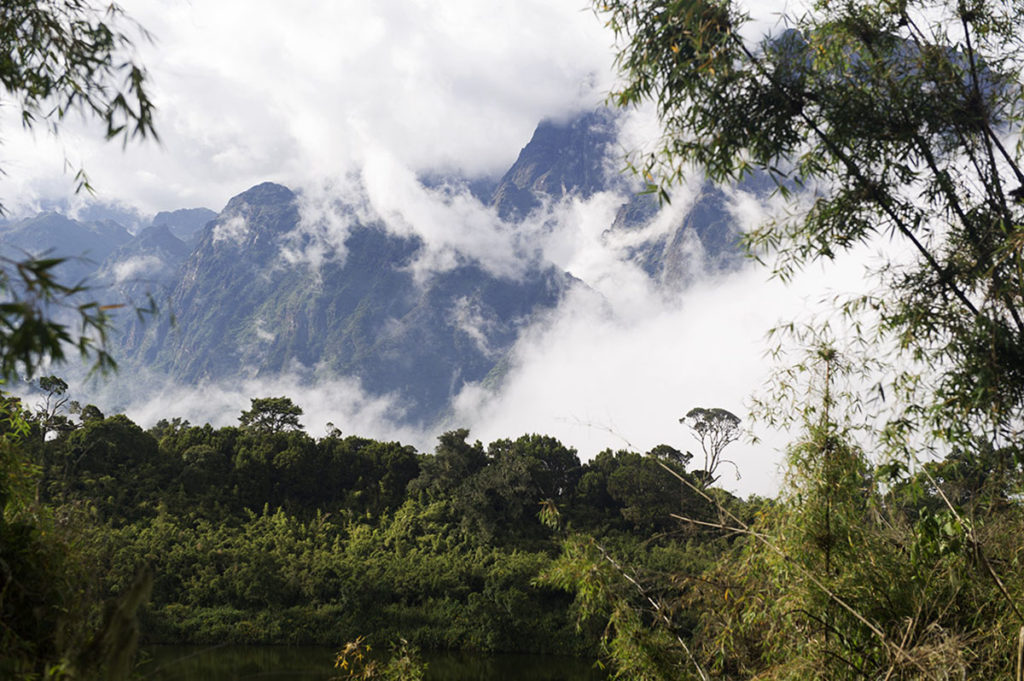
Rain suits and boots
We are curious. When we take our first steps in the park a day later, it already starts to rain. “Welcome to the Rwenzori of Uganda,” says guide Lazarus Bwambale. He grins sourly and looks up at the gray misty sky. Rain suits and boots emerge. Unfortunately, these are already soaked after twenty minutes. So we had better bring that ourselves.
Mahama trail
Starting at an altitude of over 1600 meters, we climb up half sopping. The Mahoma trail has been in use since August 2012 and, together with the ‘old trail’, forms the most interesting but also the toughest of the eight different trekking routes of the vast park. After several days of climbing, both trails reach the eternal snow of Mounts Baker (4843m), Stanley (4563), Speke (4890m) and Margherita (5109), which requires mountain experience.
Overwhelming Rwenzori
The rich and varied vegetation of which Balrukku speaks so enthusiastically is indeed overwhelming. The first 300 meters are long and steep. The ancient wet forest consists of tropical plants, climbers, tall shrubs and meters high trees. After more than two hours of walking, the forest turns into a large open field full of huge dense ferns. The narrow path almost disappears in the green sea of plants. After about a hundred meters the path winds up. Big steps. Climbing takes a lot of energy. The ground is slippery; leaves are everywhere on the ground. Stop for a moment and catch your breath.
Rare blue monkey
Suddenly a loud scream is heard in the distance. It looks like a mix of a cat and a goat in heat. Guide Bwambale puts his finger on his mouth and beckons to stand next to him. “There are blue monkeys over there, rare primates. Grab your binoculars. Do you see them?” he asks. Through the flawless Swarovski glass you can see a black monkey with a long graceful tail and a blue glow over its back. From a tree he peers in our direction from about a hundred meters on the other side. Suddenly a red tail and wings hurtles past. “That was a red-blue Turaco”, the guide calls out. These shy birds are only found here.”
Stepping up
We walk on, in one day we want to reach the second camp at Lake Mahoma at 3300 meters. That’s a bit of a hike and a seven hour walk, but for experienced hikers and go-getters it’s time to do it. The untouched forest winds its way up via narrow paths, with a view over its Alps, covered by a haze of fog. Finally it clears up and the sun breaks through.
Elephant trail
The transition to the ‘mikado forest’ of bamboo is the beginning of the second zone. The meter-high ‘stems’ form a mysterious still life, because many plants have fallen over. The sky is barely visible, the forest is so dense. Birdsong subsides and silence prevails. Liana strings hang everywhere and the sturdy bamboo is covered with beds of moss. The fine leaves on the ground give way to blubbery sludge. “The Elephant Trail starts here. Watch out, it’s slippery,” warns the guide. The shy mountain elephants travel at night, but leave clear traces with their droppings and strong scent. Supported by a bamboo stick, we slog through the slippery mud. Wellies are indispensable here. Not paying attention means going down. “At least you smell good now,” jokes the guide. Henk has slipped and is covered in shit.
True paradise
Out of nowhere, the bamboo disappears and the fairy-like Chionanthus virginicus, better known as ‘Old man’s Beard’, appears. These long mossy threads are reminiscent of a long beard, hence the name. After half an hour the elephant trail disappears and we cross small rivers. We reach the other side of the hill, where the beautiful Rukenga valley reveals itself. Tall marshy grasses predominate, complemented by Old man’s Beard trees. An alpine river flows at the edge of the valley. It seems like the most peaceful place on earth, a true paradise.
Giant lobelia
And then we see what we came for: the small perpetual blooming flowers (mimulopsis eliotti) and a number of giant lobelias. The robust Lobelia bequaertii has a rosette-like collar and a diameter of about 80 cm. It is the only species with almost cup-shaped bracts, which can reach a height of about five meters. If you want to see more of the sometimes ten-meter-high plants, you have to do a trek of at least four days, because the lobelias are located between 3700 and 4300 meters.
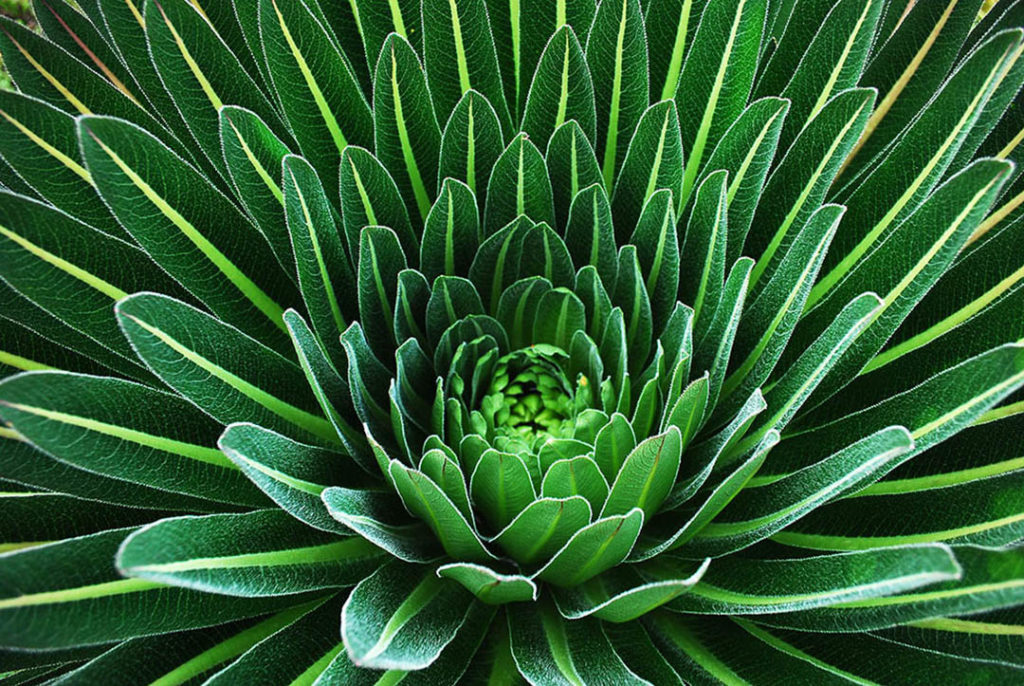
Strong woman
The last climb to the second rest camp is steep and tough. Tired but satisfied, the porters, who have caught up with us, throw down their materials. Have a drink and then set up the tents on the edge of the Mahoma crater lake. Among the bearers is also a woman, Gafina. She does this heavy lifting so she can pay the school fees of $70 per quarter and per child. She has three children. It’s quite a task. Ten years ago, her husband died and she was forced to become the breadwinner for her family. Why doesn’t she remarry? Our guide explains that in Uganda a woman who remarries is expected to bear a child for her new husband. Since she is a bit older and has three children, she doesn’t like that. Nevertheless, the hard-working and strong Gafina is happy: she has her family and that’s the most important thing.
Modest lifestyle
Gafina is not the only one who follows a humble lifestyle. It is an important characteristic of Ugandans. For Westerners, a first acquaintance with the street scene and the population may be shocking and shabby, yet most people who live in primitive houses look quite happy. They have enough food, a roof over their heads, work and they have each other. Even the poorest have a future, as the current president Yoweri Museveni has proven. He grew up in a very poor family.
Our tour guide, Gordon Mawanda, also shares a similar experience. Four of his seven siblings successfully completed university. “I never thought I would run my own travel agency or that my brother would become a doctor. I was determined to achieve something in my life. Poor students who do their best at school and excel in results are embraced. They receive a scholarship and have the prospect of a job before they graduate, such as in my case in tourism.”
Three-horned chameleon
The personal stories will haunt our minds for a long time. But after a delicious, simple meal, we are overcome with sleep. The descent is a lot faster the next morning, but it is treacherous. The paths are narrow, rocky and have heavy impact on knees and thighs. Fortunately it is dry. As Gafina happily overtakes us, she suddenly stops and walks resolutely towards a clump of ferns. Carefully with her walking stick, she conjures up a beautiful three-horned chameleon, a rare species that only occurs here.
Green savanna
The last stretch, around the raging river Kiohio, is called the Monthone zone and is reminiscent of a green savanna. It is an open area full of low shrubs, supplemented with ancient tropical trees. It’s a beautiful and surprising ending. After about four hours of walking it is over and we agree with the legendary words of explorer Douglas Freshfield: “You may be familiar with the Alps and the Caucasus, the Himalayas and the Rocky Mountains, if you have not wandered in the Rwenzori Mountains, there is still much to discover.” ![]()
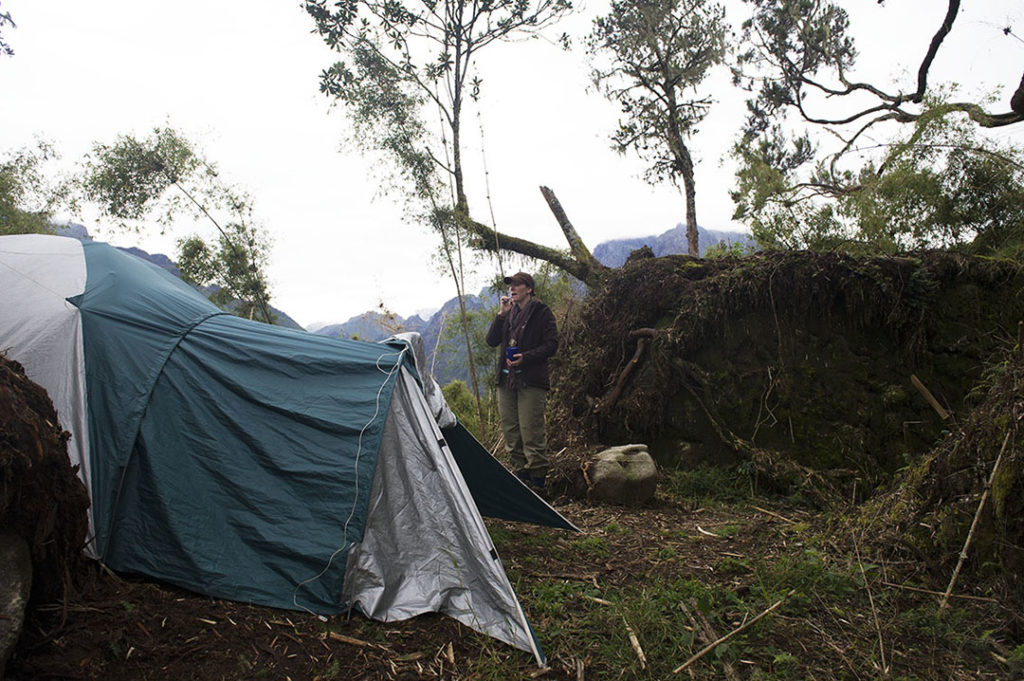
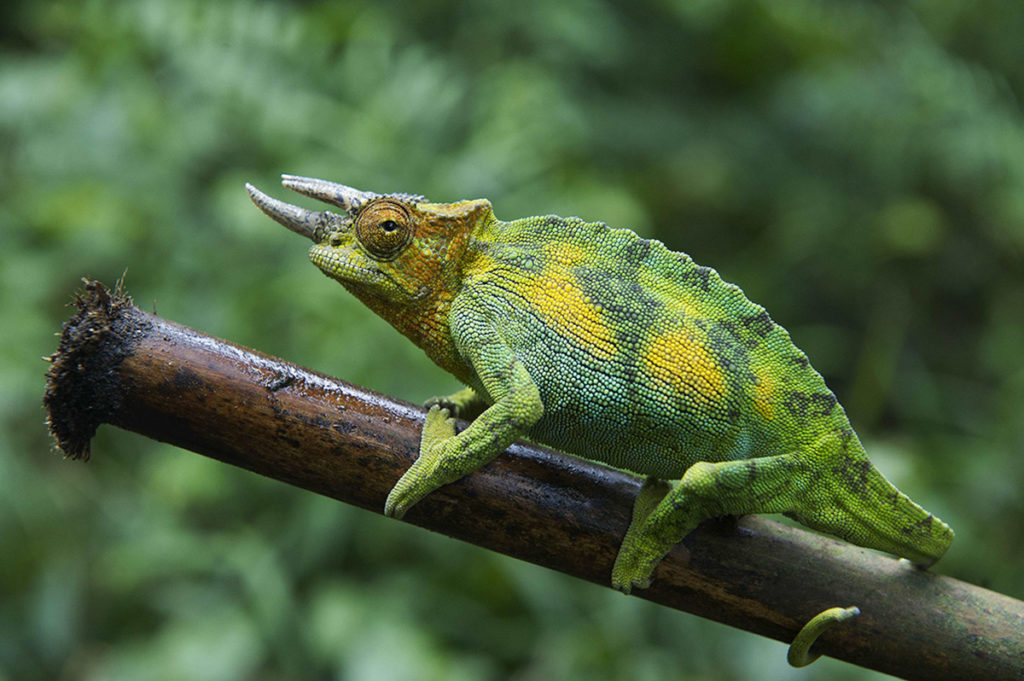
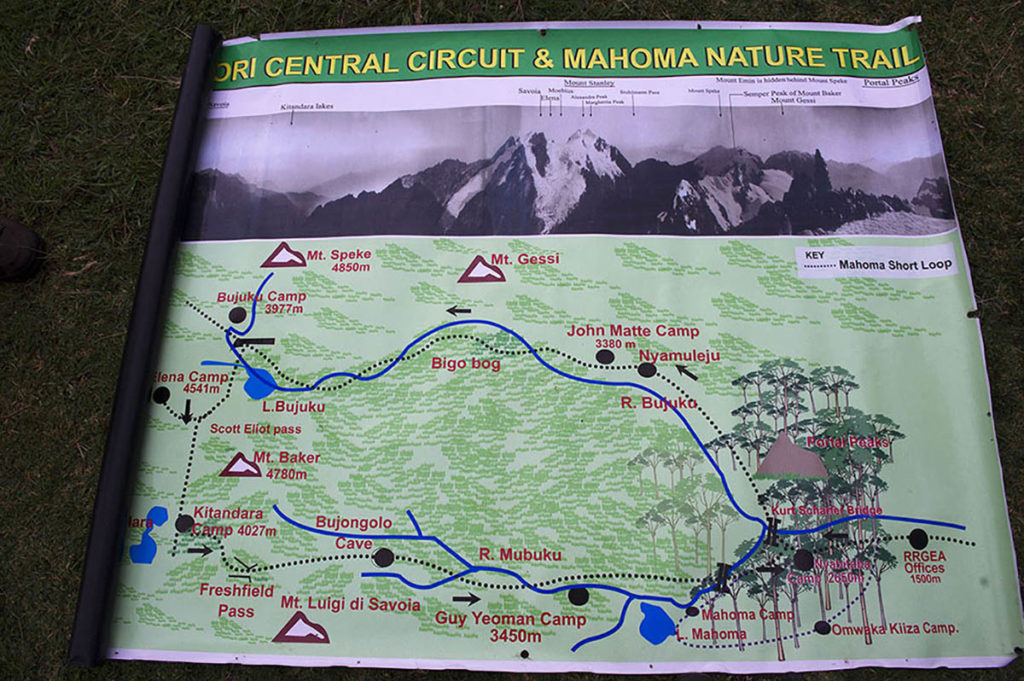
More info: ugandawildlife.org | rwenzorimountaineeringservice.com | friendagorilla.org
This trip was made possible thanks to Rungu Tours, ( rungutours.com ).
Thanks also to Swarovski Optik and Nikon Nederland for lending me the Nikkor AF-S VR 200-400mm lens.

